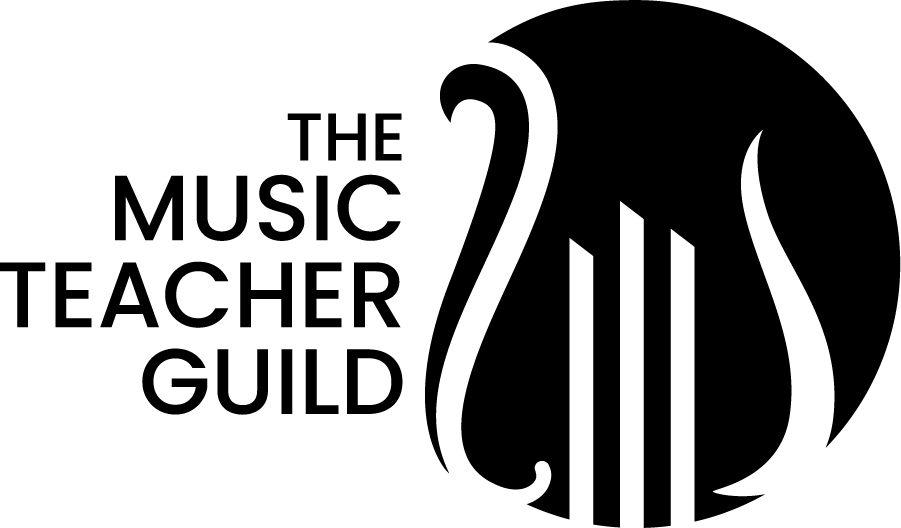Finding Part-Time Opportunities in Music Education
For many music educators, finding the perfect balance between teaching and personal life can feel like conducting a symphony—each element must be carefully harmonized. This is where part-time opportunities in music education shine. Whether you're looking to supplement your income, explore new teaching formats, or simply enjoy more flexibility, part-time music teaching roles offer a wide range of benefits. From private lessons to adjunct positions at schools, these opportunities allow educators to continue sharing their passion for music without committing to a full-time schedule. In this post, we’ll explore the best part-time opportunities in music education, where to find them, and how to thrive in these flexible roles.
For many music educators, the balance between teaching and personal life can be tricky. The appeal of part-time opportunities in music education is growing, offering flexibility, diverse experiences, and the ability to share a passion for music without the constraints of a full-time role. Whether you're aiming to enhance your income, try new teaching environments, or simply find a more flexible schedule, there are a variety of options. This guide will walk you through some of the best part-time roles in music education and where to find them.
Types of Part-Time Opportunities in Music Education
1. Private Music Lessons
One of the most popular part-time roles is offering private music lessons. These sessions allow educators to work one-on-one with students, focusing on their specific needs and goals. Whether you’re teaching piano, violin, voice, or any other instrument, private lessons can be tailored to your schedule. You can work with local students in person or take advantage of virtual platforms to teach students from anywhere in the world. Additionally, teaching privately allows you to set your rates and hours, giving you ultimate flexibility.
2. Adjunct Faculty at Schools or Colleges
Many schools and universities hire adjunct music instructors for specific courses or ensembles. These part-time roles are ideal for educators who enjoy teaching in a structured academic environment but don't want a full-time commitment. As an adjunct, you might teach a specific class, lead a choir, or coach small ensembles. The key benefit here is flexibility. Adjunct roles typically run on a semester-by-semester basis, allowing you to explore teaching opportunities without a long-term contract.
3. After-School Programs and Music Camps
After-school music programs and seasonal music camps offer another great avenue for part-time work. Many schools and community centers run programs where kids can explore instruments, participate in choirs, or learn about music theory in a less formal setting. These positions often come with built-in flexibility since programs might only run for a few hours a day or during school breaks. Music camps are another great option, usually operating during the summer and allowing educators to take on temporary teaching roles.
4. Online Teaching and Virtual Music Classes
With technology changing how education is delivered, online music teaching has become a booming market. Platforms like Lessonface, TakeLessons, and Outschool provide a way for music teachers to connect with students globally. You can design your own lessons, teach group or individual classes, and schedule sessions at times that work best for you. The flexibility of online teaching makes it an attractive option for educators looking to work from home or reach a wider audience. Plus, virtual lessons often save travel time, making them even more convenient.
Where to Find Part-Time Music Teaching Jobs
Finding part-time opportunities in music education is easier now than ever, thanks to both online resources and local networks. Here are some of the best places to look:
1. Local Community Centers and Schools
Check with local schools, community centers, and music academies to see if they need part-time music teachers or have openings for after-school programs. Many institutions are always on the lookout for experienced educators who can run short-term projects or substitute for full-time teachers.
2. Online Job Boards and Music Platforms
Websites like Indeed, Glassdoor, and LinkedIn often list part-time music teaching jobs. Specialized platforms like MusicTeachers.co.uk or even Craigslist can also have opportunities tailored to your skills. Don’t forget to explore music-specific platforms like TakeLessons, where you can offer lessons directly to students online or in person.
3. Networking in the Music Community
Sometimes the best job opportunities come from personal connections. Attend local music events, conferences, or teacher meetups to expand your professional network. By building relationships with other music educators, you may find part-time opportunities through word-of-mouth or collaborations with colleagues.
Balancing Multiple Roles as a Music Educator
Juggling multiple part-time music education roles can be rewarding but also challenging. Here are some tips for managing your time and maintaining balance:
1. Time Management Tips for Part-Time Educators
Keep a detailed calendar or scheduling app to organize your various teaching commitments. Be clear with your availability, and make sure to leave time for personal practice or professional development. Block out time for lesson planning and prep work as well, as this can sometimes add up.
2. Finding Work-Life Balance in Flexible Roles
While part-time work offers flexibility, it can also blur the line between professional and personal time. Be mindful of overcommitting. Set boundaries with students and employers about when you're available for communication, and make sure you're not stretching yourself too thin across multiple jobs.
For many music educators, the balance between teaching and personal life can be tricky. The appeal of part-time opportunities in music education is growing, offering flexibility, diverse experiences, and the ability to share a passion for music without the constraints of a full-time role. Whether you're aiming to enhance your income, try new teaching environments, or simply find a more flexible schedule, there are a variety of options. This guide will walk you through some of the best part-time roles in music education and where to find them.
Types of Part-Time Opportunities in Music Education
1. Private Music Lessons
One of the most popular part-time roles is offering private music lessons. These sessions allow educators to work one-on-one with students, focusing on their specific needs and goals. Whether you’re teaching piano, violin, voice, or any other instrument, private lessons can be tailored to your schedule. You can work with local students in person or take advantage of virtual platforms to teach students from anywhere in the world. Additionally, teaching privately allows you to set your rates and hours, giving you ultimate flexibility.
2. Adjunct Faculty at Schools or Colleges
Many schools and universities hire adjunct music instructors for specific courses or ensembles. These part-time roles are ideal for educators who enjoy teaching in a structured academic environment but don't want a full-time commitment. As an adjunct, you might teach a specific class, lead a choir, or coach small ensembles. The key benefit here is flexibility. Adjunct roles typically run on a semester-by-semester basis, allowing you to explore teaching opportunities without a long-term contract.
3. After-School Programs and Music Camps
After-school music programs and seasonal music camps offer another great avenue for part-time work. Many schools and community centers run programs where kids can explore instruments, participate in choirs, or learn about music theory in a less formal setting. These positions often come with built-in flexibility since programs might only run for a few hours a day or during school breaks. Music camps are another great option, usually operating during the summer and allowing educators to take on temporary teaching roles.
4. Online Teaching and Virtual Music Classes
With technology changing how education is delivered, online music teaching has become a booming market. Platforms like Lessonface, TakeLessons, and Outschool provide a way for music teachers to connect with students globally. You can design your own lessons, teach group or individual classes, and schedule sessions at times that work best for you. The flexibility of online teaching makes it an attractive option for educators looking to work from home or reach a wider audience. Plus, virtual lessons often save travel time, making them even more convenient.
Where to Find Part-Time Music Teaching Jobs
Finding part-time opportunities in music education is easier now than ever, thanks to both online resources and local networks. Here are some of the best places to look:
1. Local Community Centers and Schools
Check with local schools, community centers, and music academies to see if they need part-time music teachers or have openings for after-school programs. Many institutions are always on the lookout for experienced educators who can run short-term projects or substitute for full-time teachers.
2. Online Job Boards and Music Platforms
Websites like Indeed, Glassdoor, and LinkedIn often list part-time music teaching jobs. Specialized platforms like MusicTeachers.co.uk or even Craigslist can also have opportunities tailored to your skills. Don’t forget to explore music-specific platforms like TakeLessons, where you can offer lessons directly to students online or in person.
3. Networking in the Music Community
Sometimes the best job opportunities come from personal connections. Attend local music events, conferences, or teacher meetups to expand your professional network. By building relationships with other music educators, you may find part-time opportunities through word-of-mouth or collaborations with colleagues.
Balancing Multiple Roles as a Music Educator
Juggling multiple part-time music education roles can be rewarding but also challenging. Here are some tips for managing your time and maintaining balance:
1. Time Management Tips for Part-Time Educators
Keep a detailed calendar or scheduling app to organize your various teaching commitments. Be clear with your availability, and make sure to leave time for personal practice or professional development. Block out time for lesson planning and prep work as well, as this can sometimes add up.
2. Finding Work-Life Balance in Flexible Roles
While part-time work offers flexibility, it can also blur the line between professional and personal time. Be mindful of overcommitting. Set boundaries with students and employers about when you're available for communication, and make sure you're not stretching yourself too thin across multiple jobs.
Conclusion
Part-time opportunities in music education offer a fantastic way to stay connected with your passion for teaching while maintaining a flexible schedule. From private lessons and adjunct faculty positions to online classes and after-school programs, there are plenty of ways to engage with students on your own terms. By exploring these opportunities, you can build a fulfilling career that adapts to your lifestyle. So, whether you're looking for a side gig or want to expand your teaching portfolio, part-time roles in music education are the perfect way to continue sharing the gift of music.
Part-time opportunities in music education offer a fantastic way to stay connected with your passion for teaching while maintaining a flexible schedule. From private lessons and adjunct faculty positions to online classes and after-school programs, there are plenty of ways to engage with students on your own terms. By exploring these opportunities, you can build a fulfilling career that adapts to your lifestyle. So, whether you're looking for a side gig or want to expand your teaching portfolio, part-time roles in music education are the perfect way to continue sharing the gift of music.

